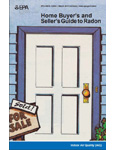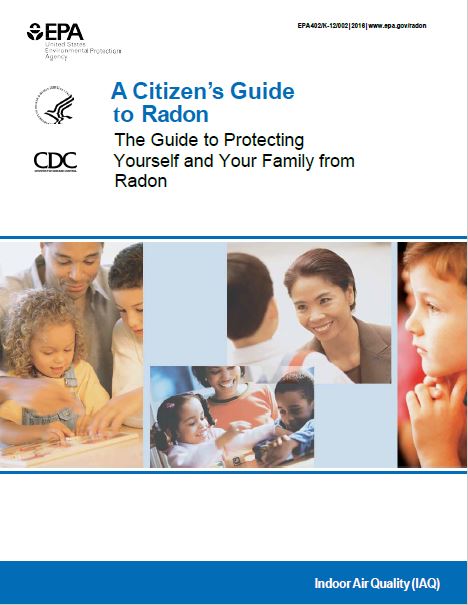About Radon Gas
Radon is a colorless and odorless gas that is known to cause cancer. Radon is estimated to cause around 21,000 deaths each year. In fact, the Surgeon General has warned that radon is the second leading cause of lung cancer in the United States with smoking being #1. If you smoke and your home has high radon levels, your risk of lung cancer is especially high. In 2009, The World Health Organization (WHO) said radon causes up to 15% of lung cancers worldwide.Radon occurs naturally from soil and it commonly enters a structure through cracks in the floors and walls, gaps around service pipes, gaps in suspended floors, cavities inside walls and construction joints.
We have found that about 1 out of 10 homes we’ve tested in the St. Louis area have elevated levels of radon (4.0 pCi/L and over). The only way to know if your home has elevated levels of radon is to test! Radon levels vary from home to home. Your home may have high levels of radon while your neighbors do not.
The Environmental Protection Agency (EPA), the U.S. Surgeon General, and the Centers for Disease Control and Prevention (CDC) strongly recommend that ALL homebuyers have an indoor radon test performed prior to purchase or taking occupancy, and recommend having the radon levels mitigated if elevated radon concentrations are found. The EPA recommends testing for radon gas every 2 years.
If elevated levels of radon are found after testing, a radon mitigation system is recommended to reduce the radon levels in the home. Spotlight Radon does not install radon mitigation systems. We offer unbiased radon testing only.
Our radon tests are performed by placing a radon monitor in the lowest livable area of the home for at least 48 hours and interpreting the data to produce an easy to read report of the results. Typically, the basement of a home is tested, in a room where people are likely to spend the most time such as in a bedroom or TV area if applicable. If the home does not have a basement, the ground floor is tested. Radon testing is recommended up to the 2nd level of a building such as for 2nd floor condo units. We will place additional monitors in the home for basements larger than 2,000 sq ft and for each foundation type (basement, slab or crawlspace).
To produce reliable results, it’s important that the building occupants follow the Closed House Conditions that listed below. Testing should only be done when these conditions can be maintained. Therefore, if you know you are going to have exterior doors and windows open regularly, renovations are being done, the home’s utilities are off, etc. that you postpone radon testing until Closed House Conditions can be achieved for at least 12 hours prior to the radon test and during the entire test.
The conditions stated below were developed by the U.S. Environmental Protection Agency (EPA) and are mandatory to produce meaningful results for short-term radon gas testing.
- All windows in the entire home must be kept closed and all doors must be kept closed except for momentary entry and exit.
- Do not tamper with, move, cover or alter the testing device in any way.
- Dryers, range hoods, and bathroom fans may be operated normally but not continuously.
- The thermostat should be set to “heat” or “cool” with the fan on “auto” with the temperature between 65° and 80°F.
- Attic fans, whole house fans, window fans, and fireplaces should NOT be operated. Window air conditioners should be on “re-circulate”
- If a radon mitigation system has been installed, it must have been operating continuously for 24 hours prior to the test and must operate during the test.
All Radon Gas Tests are performed using Sun Nuclear Continuous Radon Monitors (CRM). A CRM is ideal for a typical 48 hour radon test. Some of the benefits of using a CRM are:

- They are great for testing radon gas quickly and accurately which is important for real estate transactions.
- Results are emailed out the same day as the monitors are retrieved from the property which means no sending away to a lab and waiting for results.
- They provide easy to read reports with hourly data points and a graph of the radon levels found.
- The monitors can show evidence if they have been tampered with.
All monitors are transported using hard cases for protection. We place our monitors at the property according to the EPA protocols.
Reports

Our Radon Gas Testing reports are informative and easy to understand. The results of the radon test are recorded hourly and shown on a graph for a clear visual of your property’s radon levels during the test period. The results are shown in terms of the overall and EPA averages.
Click here to view a sample report.
 Home Buyer’s and Seller’s Guide to Radon
Home Buyer’s and Seller’s Guide to Radon
This Guide answers important questions about radon and lung cancer risk. It also answers questions about testing and fixing for anyone buying or selling a home.


The information in the above tables and downloadable guides are from the EPA’s website found at www.epa.gov/radon.
Radon Gas Testing starts at just $150 for a 48 radon test. For homes that are farther away from the St. Louis area, a trip charge of $25-$50 will be added to the total. The total price will be reflected in the online scheduler for you to view prior to finalizing the order.
Contact
Spotlight Radon Testing
(314) 458-3811
spotlightradon@gmail.com

 A Citizen’s Guide to Radon
A Citizen’s Guide to Radon